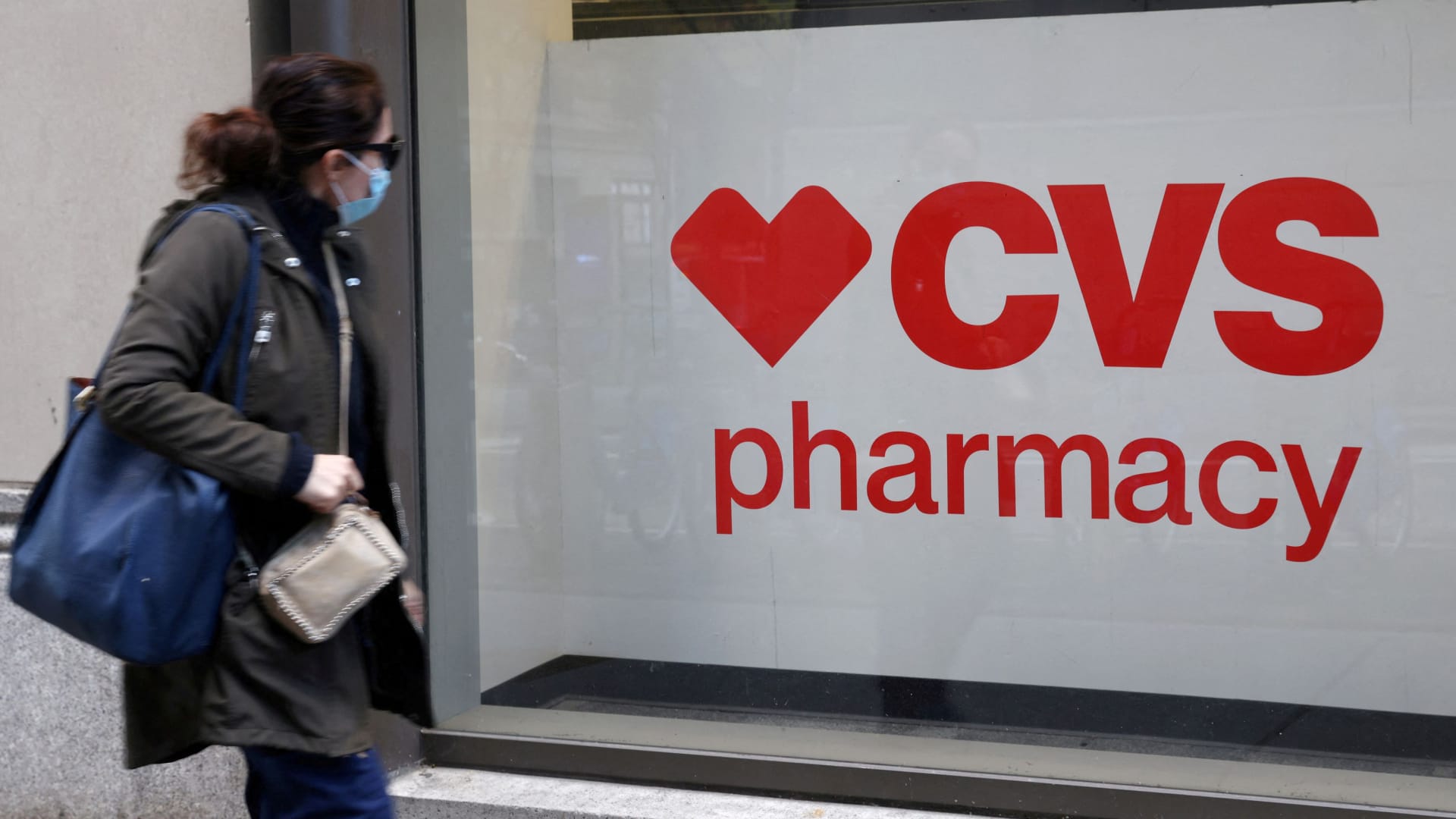CVS Health on Wednesday reported mixed third-quarter results as higher medical costs squeezed its bottom line. The earnings report is CEO David Joyner’s first at the helm of the troubled retail drugstore chain.
The company expects elevated medical costs to continue to pressure its performance this year, “and as a result we are not providing a formal outlook at this time,” a spokesperson told CNBC. CVS will provide commentary on what it expects “directionally” during its earnings call, the spokesperson said.
Wall Street’s confidence in CVS has soured this year after three straight quarters of full-year guidance cuts, prompting pressure from an activist investor to turn the business around. Shares of the company are down nearly 27% for the year as higher medical costs in its health insurance unit, Aetna, eat into its profits, reflecting seniors who are returning to hospitals to undergo procedures they had delayed during the Covid-19 pandemic.
Also on Wednesday, CVS named a new president for Aetna, effective immediately: Steve Nelson, the former CEO of healthcare giant UnitedHealth Group. Joyner and Nelson are tasked with convincing investors that CVS can get back on track and better manage the higher-than-expected costs.
Meanwhile, longtime company executive Prem Shah will take on a new, expanded role that oversees the company’s retail pharmacy, pharmacy benefits and health care delivery businesses, CVS said.
Here’s what CVS reported for the third quarter compared with what Wall Street was expecting, based on a survey of analysts by LSEG:
- Earnings per share: $1.09 adjusted vs. $1.51 expected
- Revenue: $95.43 billion vs. $92.75 billion expected
On Oct. 18, when CVS announced Joyner had replaced former CEO Karen Lynch, the company also said it had conducted a strategic review that included layoffs, write-downs and the closure of 271 more retail stores. Those actions were in addition to a plan announced in August to cut $2 billion in expenses over the next several years, which includes cutting nearly 3,000 jobs, or less than 1% of its workforce.
CVS reported sales of $95.43 billion for the third quarter, up 6.3% from the same period a year ago due to growth in its pharmacy business and insurance unit.
The company posted net income of $71 million, or 7 cents per share, for the third quarter. That compares with net income of $2.27 billion, or $1.75 per share, for the year-earlier period.
Excluding certain items, such as amortization of intangible assets, restructuring charges and capital losses, adjusted earnings per share were $1.09 for the quarter. That’s consistent with the estimate the company provided last month.
Adjusted and unadjusted earnings also included a charge of 63 cents per share, or $1.1 billion, from so-called “premium deficiency reserves” in its insurance business related to anticipated losses in the fourth quarter of 2024.
That refers to a liability that an insurer may need to cover if future premiums are not enough to pay for anticipated claims and expenses. Premium deficiency reserves “are effectively an acceleration of future losses, shifting the earnings cadence between” the third quarter and fourth quarter, a spokesperson told CNBC.
CVS expects those premium deficiency reserves “to be substantially released” during the fourth quarter, which will benefit results in that period. The spokesperson said CVS does not expect to book a premium deficiency reserve for 2025.
CVS also recorded restructuring charges of 93 cents per share, or $1.17 billion, in the third quarter. That includes $607 million for additional stores it plans to close in 2025 and $293 million related to layoffs.
Pressure on insurance unit
CVS’s insurance business booked $33 billion in revenue during the quarter, up more than 25% from the third quarter of 2023. The division reported an adjusted operating loss of $924 million for the third quarter.
The insurance unit’s medical benefit ratio — a measure of total medical expenses paid relative to premiums collected — increased to 95.2% from 85.7% a year earlier. A lower ratio typically indicates that a company collected more in premiums than it paid out in benefits, resulting in higher profitability.
CVS’s health services segment generated $44.13 billion in revenue for the quarter, down nearly 6% compared with the same quarter in 2023.
That unit includes Caremark, one of the nation’s largest pharmacy benefits managers. Caremark negotiates drug discounts with manufacturers on behalf of insurance plans and creates lists of medications — or formularies — that are covered by insurance and reimburses pharmacies for prescriptions.
CVS’s health services division processed 484.1 million pharmacy claims during the quarter, down from 579.6 million during the year-ago period.
The company’s pharmacy and consumer wellness division booked $32.42 billion in sales for the third quarter, up more than 12% from the same period a year earlier. That unit dispenses prescriptions in CVS’s more than 9,000 retail pharmacies and provides other pharmacy services, such as vaccinations and diagnostic testing.
The increase was partly driven by increased prescription volume, CVS said. Pharmacy reimbursement pressure, the launch of new generic drugs and lower front-store volume, including from decreased store count, weighed on the unit’s sales.
